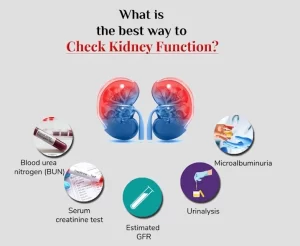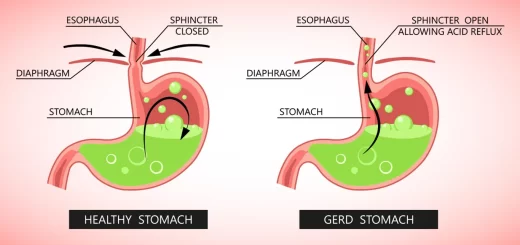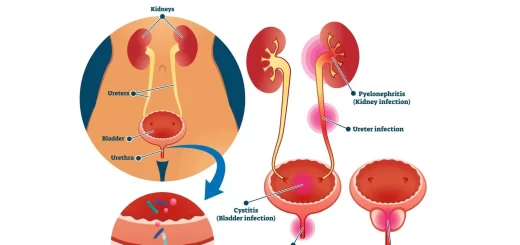Physical properties of urine, Tests to evaluate kidney function and Normal constituents of urine
Urine is a liquid by-product of metabolism, It flows from the kidneys through the ureters to the urinary bladder, It is often toxic, The kidneys make urine by filtering the wastes and extra water from the blood, The waste is called urea, the blood carries it to the kidneys, and urine travels through ureters to the bladder which stores urine until you are ready to urinate.
Physical properties of urine
Urine ranges between 1 and 1.5 L/day, The volume depends on water intake, external temperature, diet, mental and physical state of the individual, Normally, more urine is secreted during the day than at night.
Physiological increase: More than 2 L/day. It occurs in winter, also after excessive fluid intake. Nervousness or excitement also causes an increased volume of urine.
Abnormal increase (polyuria): More than 3 L/day, It occurs in diabetes mellitus (may reach 5 L/day); in diabetes insipidus (10-15 L/day) and in hyperparathyroidism.
Physiological decrease: May occur in summer due to increased sweating and during fasting or restricted fluids in the diet.
Abnormal decrease (Oliguria): Less than 200 ml/day. It occurs in acute nephritis, heart failure, shock, burns, and after hemorrhage. Also may occur during and after vomiting and diarrhea.
Anuria: No urine at all, in the late stages of renal failure and heart failure.
Color
The normal color of urine is amber yellow, This color is due to pigments called urochromes, They are urobilin or urobilinogen + peptide, There are also other pigments (coproporphyrin, uroerythrin), but occur in small amounts, The color is changed in the following conditions:
- Diabetes insipidus: colorless or pale yellow.
- Fever, deep orange.
- Obstructive jaundice: Greenish brown due to the presence of Chol bilirubin.
- Haemorrhage in urinary tract, reddish brown color.
- Alkaptonuria: Black (homogenistic acid is oxidized to give black color when exposed to the air.
- Ingestion of food colored with dyes or colored drugs result in discoloration of urine.
Odour
Fresh urine is normally aromatic (uriniferous), This odour is changed by:
- Different types of food: Cabbage, garlic, onion.
- Severe uncontrolled diabetes mellitus: Fruity odour due to the presence of acetone/acetoacetic acid.
- Contaminated urine: Ammoniacal dour, In stagnant urine, this odour is due to bacterial action, e.g. on urea which is converted into ammonia.
- Putrefaction: Putrid odour due to bacterial growth in the urinary infection.
Reaction
- On a mixed diet, it is acidic (pH is 6), It may be slightly acidic or slightly alkaline.
- The urine pH depends on the ratio of acid phosphate (NaH2PO4) to alkaline phosphate (Na2HPO4), The kidney mainly excretes acid phosphate to preserve the alkali.
- A high protein diet gives acidic urine due to the excretion of excess phosphate and sulphate, (Lion urine = acidic/clear).
- Vegetables and fruits give alkaline medium due to their high sodium and potassium content with excretion of sodium and potassium bicarbonate in urine (Horse urine = alkaline/turbid).
- Alkaline urine is passed an hour after a meal, this is the so-called alkaline tide.
Aspect
- Normal urine is clear (transparent).
- On standing, it turns cloudy due to the precipitation of muco- and nucleoproteins and epithelial cells (present in traces in normal urine).
- It becomes turbid and opaque due to the presence of albumin.
- Exposed urine is a good medium for bacterial growth as its pH becomes alkaline, resulting in the precipitation of phosphates.
Deposits
Normal urine is devoid of deposits. In case of its presence, the color and shape of deposits are examined, In order to examine the deposit, we perform centrifugation to urine then microscopic examination for:
- Crystals: urates and oxalates (acid urine), triple phosphate (ammonium magnesium phosphate [NH4MgPO4]) (alkali urine).
- Casts: albuminoid substances released from epithelial or white blood cells in case of glomerulonephritis.
- Parasitic ova.
- Pus cells or RBCs.
Specific gravity
Normally, it ranges from 1.015 to 1.025, It varies inversely with the volume of urine, e.g.:
- In diabetes insipidus, it is low (1.004).
- In fever, it is high (around 1.030) due to small amount of urine.
- In diabetes mellitus, the specific gravity is about 1.040 due to the presence of glucose.
Normal constituents of urine
Major organic nitrogenous constituents
Also called nonprotein nitrogenous constituents (NPN):
1. Urea
- Ranges between 20-40 g/day.
- Constitutes about 85% of total nitrogen excretion.
- It is the principal end product of protein metabolism in mammals.
- Its excretion is directly proportional to protein intake.
The excretion is increased whenever protein catabolism is increased as in fever, diabetes mellitus or excess adrenocortical activity, Urea is synthesized in the liver, so decreased urea excretion is met within advanced liver diseases. Retention occurs in nephritis which results in smaller output and an increase in urea concentration in the blood.
2. Ammonia
- 0.8-1.2 g/day.
- Its formation & excretion are important mechanisms that protect the body against acidosis.
- Ammonia excreted is derived from glutamine by glutaminase enzyme in the kidney.
- The formed ammonia drags with it H+ to be excreted as ammonium ions (NH4+) which is excreted in the urine in the form of NH4CI.
- Ammonia excretion is increased in acidosis.
3. Creatinine
- 1-1.8 g/day.
- Creatinine is the metabolic end-product of creatine in muscles.
- The amount of creatinine in urine is proportional to the muscle bulk.
Organic non-nitrogenous constituents
- Oxalic acid amount is very low. It is found as calcium oxalate crystals in urinary deposits, It is increased in case of ingestion of fruits and vegetables of high oxalate content, It is increased in inherited metabolic disease (primary hyperoxaluria), a large amount of oxalates may be continuously excreted.
- Organic acids: Include citric acid, lactic acid, and glucuronic acid.
Abnormal constituents of urine
a) Proteins (proteinuria)
The increased amount of albumin in the urine (normally 30-200 mg/day) is called albuminuria, which can be:
- Physiological (less than 500 mg/day) after severe muscle exercise, after prolonged standing, after a high protein meal, and during pregnancy.
- Pathological:
- Pre-renal: The primary causes are factors operating before the kidney, e.g. heart failure.
- Renal: The lesion is intrinsic in the kidney, e.g. nephritis and nephrosis.
- Post-renal: The lesion is in the lower urinary tract, e.g. cystitis.
Albumin in urine is detected by a heat coagulation test, There are other types of proteins that may appear in the urine as Bence-Jones proteins, Bence-Jones proteins are the abnormal globulins that appear mainly in case of multiple myeloma which is a bone marrow cancer, also in leukemia and lymphosarcoma, The urine in such conditions undergoes 3 phases: clotting when heated to 60° C, dissolving at 100°C, and re-clotting by cooling.
b) Sugar
- Glucose (glucosuria) is normally not more than 1 g/day.
- Fructose (fructosuria) is a rare anomaly in which the metabolism of fructose is disturbed.
- Galactose (galactosuria): May occasionally occur in infants and mothers, also in congenital galactosemia.
- Lactose (lactosuria): During pregnancy and lactation, may appear in mothers and infants.
- Pentose (pentosuria): May occur after ingestion of food containing large amounts of pentoses. Also in congenital pentosuria is due to inability to metabolise L-Xylulose.
c) Ketone bodies (ketonuria)
They are acetone, aceto-acetate and ß-hydroxybutyrate, Normally 3-15 mg are excreted in urine per day. Ketonuria is the presence of excessive amounts of ketone bodies in urine, This may occur in uncontrolled diabetes mellitus and during prolonged starvation, Aceto-acetate and ß-hydroxybutyrate are eliminated as salts thus depleting the alkali reserve which results in acidosis.
d) Bile
- Bile pigments: They appear in urine, in hepatic, obstructive, and haemolytic jaundice.
- Bile salts: Bile salts appear only in obstructive jaundice.
e) Blood (haematuria)
Due to bilharziasis, blood diseases, renal stones, and renal tumours. Hemoglobinuria, which is less common, is due to excessive haemorrhage in the urinary tract.
f) Porphyrin
The occurrence of uroporphyrins, as well as the increased amount of coproporphyrins in urine, is termed porphyria.
Tests to evaluate kidney function
Evaluation of the functioning capacity of the kidneys may be ascertained through laboratory tests. Some of the investigative tools include:
Urine analysis: screens for the presence of abnormal constituents and hence related disease.
The presence of albuminuria on two occasions with the exclusion of a urinary tract infection indicates glomerular dysfunction. Measurement of urine osmolality (specific gravity) allows for assessment of concentrating ability of renal tubules hence used as Tubular Function test.
Determination of the circulatory levels of nonprotein nitrogenous substances:
- Creatinine level in blood and its excretion in urine is a good index of kidney function (creatinine clearance) since its concentration is almost constant in one person and unaffected by diet.
- Urea or BUN: about 85% of urea is eliminated via kidneys; the rest is excreted via the gastrointestinal (GI) tract. Serum urea levels increase in conditions where renal clearance decreases (in acute and chronic renal failure/impairment). Urea may also increase in other conditions not related to renal diseases such as upper GI bleeding. dehydration, catabolic states, and high protein diets. Urea may be decreased in starvation, a low-protein diet, and severe liver disease.
- Serum creatinine is a more accurate assessment of renal function than urea; however, urea is increased earlier in renal disease.
- The ratio of BUN: creatinine can be useful to differentiate pre-renal from renal causes when the BUN is increased. In pre-renal disease, the ratio is close to 20:1, while in intrinsic renal disease, it is closer to 10:1. Upper GI bleeding can be associated with a very high BUN to creatinine ratio (sometimes >30:1).
You can subscribe to science online on Youtube from this link: Science Online
You can download Science Online application on Google Play from this link: Science Online Apps on Google Play
Urinary bladder structure, function, Control of micturition by Brain & Voluntary micturition
Control of water balance in your body, Regulation of volume & osmolality of Body fluids
Urine formation, Factors affecting Glomerular filtration rate, Tubular reabsorption & secretion
Histological structure of kidneys, Uriniferous tubules & Types of nephrons
Functions of Kidneys, Role of Kidney in glucose homeostasis, Lipid & protein metabolism
Acid-base balance importance, Defense against changes in Hydrogen ion & Threats of pH




